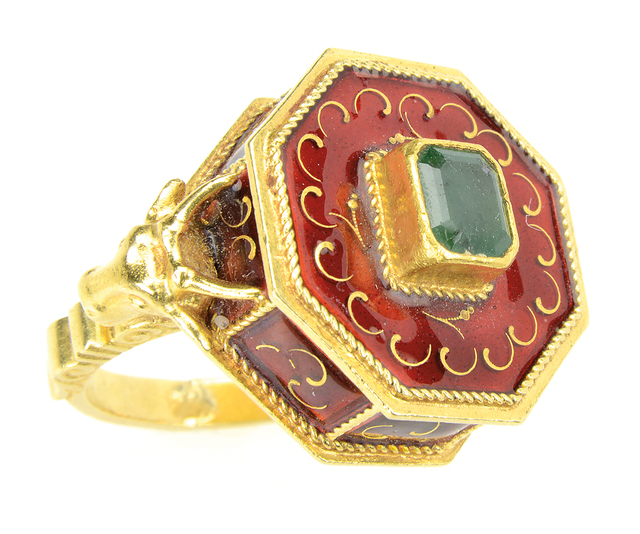Poison rings are still in fashion
Poison rings play a part in a lot of murder mysteries. Adversaries were removed with a flick of a ring cover over a glass of wine.
The idea of a ring that held poison is thousands of years old, but it is the Victorian era that’s called “the era of the poison ring.” A ring was made to conceal a small compartment with a tight cover that could hold a poisonous powder. It was designed to be used to kill foes or to commit suicide if captured by enemies.
But historians now think the rings were not often used to hold poison. Instead, the small compartment held religious relics, locks of hair of lovers, notes or other tiny memorabilia of a romantic or religious nature.
The poison ring is not out of fashion. Internet ads offer hundreds of modern versions today. Prices range from under $40 for pewter or plated metal rings to thousands of dollars for gold rings set with precious stones.
Q: We purchased a stool in the 1970s while we were living in England. It’s wood, 18 inches high, and has vertical fluted sections that join to make a circular outer case. When the top is raised, a hinged toilet seat appears. Under it is a compartment with a lidded ceramic potty jar.
It also has a hinged slide-out footrest with a leather top. There are no marks on the wood frame. The lettering on the bottom of the jar reads, “Burleigh, Made in England.” We have no idea of its origin or history. Can you help?
A: You have a type of commode the English call a “close stool.” During the days before indoor plumbing, chamber pots with lids were usually kept under beds and used in the evenings when it was too dark or too difficult to go outside to an outhouse.
The more well-to-do 18th-century family could afford a close stool, a small decorative cabinet that held a chamber pot inside. It was chair-seat height and had an opening on top so the user could sit somewhat comfortably. Later close stools were made with hinged outer lids that could be lifted to access the chamber pot.
By the 1870s, many had a toilet seat and a lid. A pull-out footrest made it easier for a child to use. Fancy close stools were designed to look like elegant pieces of furniture with stained woodwork and upholstered tops. With the advent of indoor plumbing, they were used as parlor stools or stands.
The mark on your chamber pot was used in the 1930s by Burgess &Leigh, a British pottery company founded in 1862 in Burslem, England. The pottery started using the name “Burleigh Ware” in the 1930s, and it uses the same name today. Your close stool is worth about $200 to $300.
Q: I have been collecting Space Race-related mechanical banks for a few years. They’re all pot metal, and some of them are labeled with the name of an American astronaut or a commercial bank. The shapes include a rocket, flying saucer, ray gun and spacecraft. What do you think they’re worth?
A: Banks like yours were made from the 1950s into the early ’70s by Dura Mold &Manufacturing Co. and Astro Manufacturing Co., both in East Detroit (not Eastpointe), Mich. Most were sold at wholesale prices to banks and insurance companies, which probably gave many of them away to new customers.
While the banks are not very old, they appear to be relatively rare and are sought by an eager group of collectors. They sell online for $40 and up.
Tip: When you move, remember that there is no insurance coverage for breakage if the items are not packed by the shipper.
Terry &Kim Kovel’s column is syndicated by King Features. Write to: Kovels, (Las Vegas Review-Journal), King Features Syndicate, 300 W. 57th St., New York, NY 10019.




























